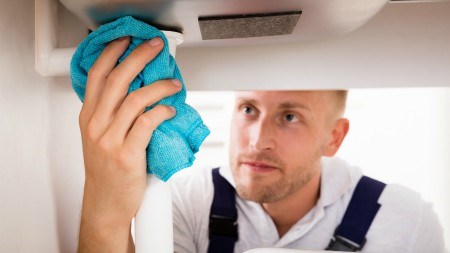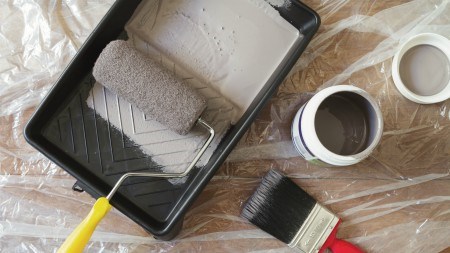In these tough economic times, it is tempting to overlook home maintenance, but this could cost you a sale when you put your home on the market.
Even in stronger markets like the Western Cape, consumers are feeling the pinch and many homeowners may be tempted to extend home maintenance timeframes and overlook small repairs to stretch their budgets.
However, this could prove to be a big disadvantage with costly repercussions if you decide to sell down the line, says Dawn Bloch, area specialist for Lew Geffen Sotheby’s International Realty in Zwaanswyk, Lakeside and Kirstenhof.
“If your home needs the most work, it will remain on the market for longer than similar homes that need less additional spend. Buyers generally prefer homes that are immediately habitable, or at least ones that don’t need extensive renovations and repairs.
“If you let maintenance slide, when you do decide to sell you could be in for a shock at the cost of making all the necessary repairs,” she says. Sandy Geffen, executive director of Lew Geffen Sotheby’s International Realty in South Africa, says that homeowners who regularly invest in maintenance and repairs will save money in the long run, even if they don’t sell.
“Repairing damaged carpets, ceilings and paintwork after a geyser has burst or replacing an entire gutter system, will probably cost more than servicing or timeously replacing an old geyser or repairing a faulty strip of gutter,” Geffen says.
Salaries are decreasing in real terms
According to a BankservAfrica survey the average nominal disposable income in January 2015 was R12 808 compared to R11 506 in real terms. In December 2016, Bankserv’s data showed nominal salaries had increased to R14 102 a month, but in real terms actually decreased to R11 309. Dr Caroline Belrose, head of Information Services at BankservAfrica, said the 1.5% decline is likely to put consumers under increasing pressure resulting in reduced expenditure on items such as cars, homes and furniture.
Level of home maintenance is decreasing
According to John Loos, household and property sector strategist at FNB Home Loans, there has been slight recent deterioration in levels of home maintenance and upgrades. “Given the recent recessionary conditions, it would be realistic to expect some decline in the level of costly value adding upgrades, but our sample of estate agents surveyed has not seen the onset of such a decline.
“Among homeowners fully maintaining their property and making some improvements there has been a slight decline of late, from 36.5% for the latter half of 2016 and the first quarter of 2017, to 35.5 in the second quarter. “The percentage of owners not improving but still fully maintaining homes, has also declined, from 27.5% in the first quarter of 2017 to 25.5% in the second quarter.”
The survey showed that the percentage of homeowners attending to basic maintenance only - a level which in effect means the home will go backward over time - was 12% for the two quarters up to the second quarter of 2017, which is a rise from 9.5% in the first quarter of 2017. Those owners allowing their homes to get run down in the areas surveyed, were a fairly insignificant 1% in the second quarter, compared to 0.5% in the previous quarter.
Further hints of slowing in the level of home maintenance and upgrades also comes from a view of growth in real retail sales by hardware, paint and glass products retailers, says Loos.
“Using a three-month moving average for smoothing purposes, this category of real retail sales declined slightly by -1% year-on-year for the three months to April 2017, and -1.6% year-on-year in April alone. This represents a slowdown from +2.7% three-month moving average in November last year,” says Loos
“The data taken together shows some mild weakening of late, and the perception that some weakness may be emerging in the home maintenance and upgrades market becomes more believable, although the situation remains significantly better than 2008/9 recession levels. However, a recently renewed recessionary environment, and weak consumer confidence levels should be expected to lead to greater household spending caution and lower levels of home maintenance and upgrades on average.”
Which are the home repairs that you cannot afford to let slide?
Bloch says that roofs should be regularly checked for wind and storm damage, loose tiles, gaps in the flashing and damage around chimneys. “Clearing the gutters should be a regular task as overflows can damage paint, plaster and brickwork and blockages could cause gutters to collapse.
“Tree branches and shrubs should be trimmed clear of telephone and electricity cables, as well as from roofs and gutters. Window putty should be checked for damage and window frames and doors should be sanded and varnished annually,” says Bloch.
Geffen says that plumbing and electrical systems should also be checked regularly. “Visible water pipes should be examined for cracks, leaks or rust and dripping taps and leaking cisterns must be repaired. The electrical distribution box and fuses should be checked for signs of blackening and visible cables must be examined for worn insulation or exposed wires and signs of shorting.
“And keeping to a regular maintenance schedule will help ensure you can handle many of the necessary repairs yourself.
“If you paint the exterior of the house in one stage, the interior next, garages and outbuildings and perimeter walls in following stages you will avoid the costs of one big paint job. Doing it this way, you could probably pay for painting your home from monthly income rather than dipping into savings,” concludes Geffen.





